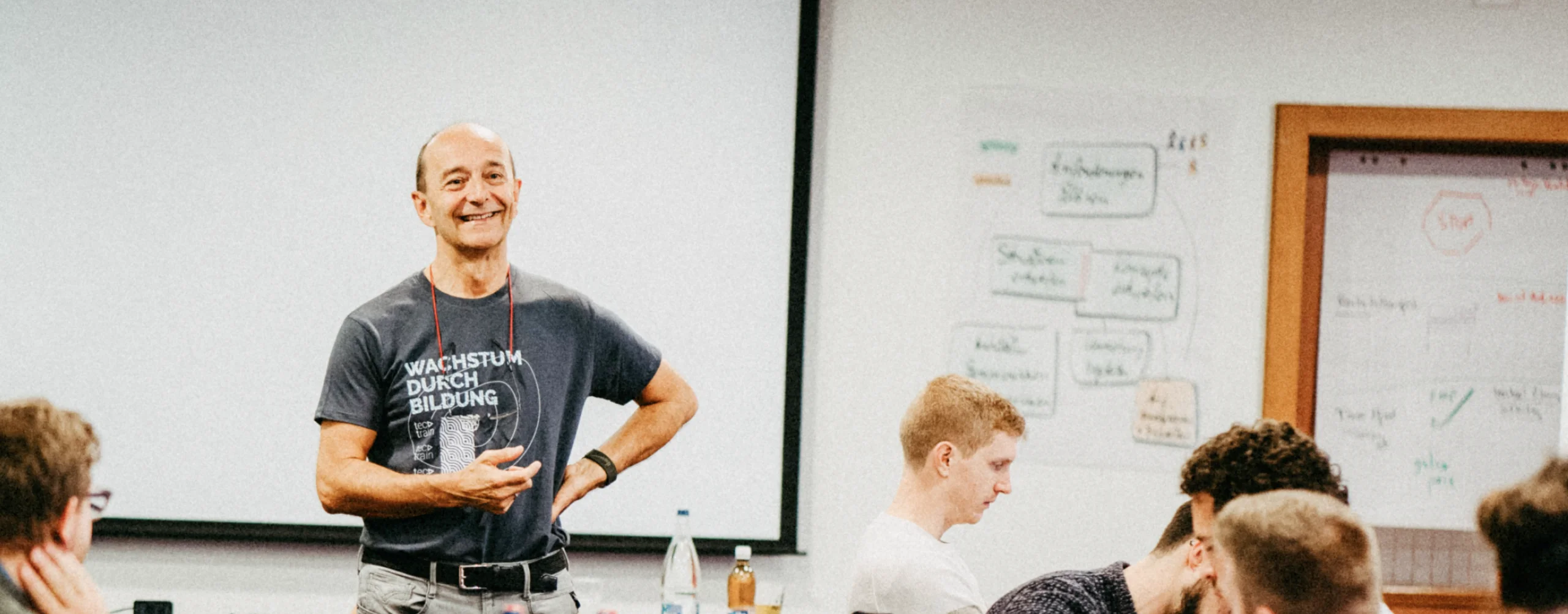Key Takeaways
-
The Agile Manifesto was written in 2001 by 17 software experts after two days of discussion. It defines 4 values and 12 principles to improve software development.
-
The 4 agile manifesto values are: people over tools, working software over documents, customer collaboration over contracts, and responding to change over plans.
-
The 12 agile manifesto principles highlight early delivery, openness to change, daily teamwork, motivated teams, direct communication, working software as progress, sustainable pace, technical quality, simplicity, self-organization, and regular reflection.
-
The Agile manifesto started in software, it is now applied in many fields to boost teamwork, speed, and adaptability.
What is the Agile Manifesto?
Agile stands out because it starts with ideas, values, and principles that shape a mindset. The move to agility began when a small group met to rethink old project management problems.
In 2001, 17 software leaders met for two days and published the Agile Manifesto with guiding principles.
A core line says to respond to change instead of following a fixed plan. That sentence captures the approach.
The manifesto grew from software work, yet its values reach wider. Many teams use the agile manifesto for software development in administrative work and other fields. It serves as a simple guide for agility across sectors, far beyond its first purpose.
Featured Resource:
Agile Transformation: Benefits, Challenges & Implementation
Who wrote the Agile Manifesto?
The Agile Manifesto was written in 2001 by these 17 authors:
-
Kent Beck
-
Mike Beedle
-
Arie van Bennekum
-
Alistair Cockburn
-
Ward Cunningham
-
Martin Fowler
-
James Grenning
-
Jim Highsmith
-
Andrew Hunt
-
Ron Jeffries
-
Jon Kern
-
Brian Marick
-
Robert C. Martin
-
Steve Mellor
-
Ken Schwaber
-
Jeff Sutherland
-
Dave Thomas
Instead of trying to pin down a single definition of Agile, they shared 4 values and 12 principles to show what Agile focuses on. After days of discussion, they agreed on a set of clear ideas to address the software development problems they faced in their careers.
4 Main Agile Manifesto Values
Four Agile Manifesto values sit at the core of every agile method, framework, and model. Adopting agile means more than changing tools or tweaking processes.
Moving from solo work to team work will not be enough.
Replacing waterfall with an agile framework will not be enough either.
Shifting attention from project management to product development alone will still fall short.To embrace agility, your organization needs a cultural shift guided by these values. Align goals, habits, and decisions with the four values in day-to-day work. That is how agility takes root across the whole company.
1- Individuals and interactions over processes and tools
“Individuals and interactions over processes and tools” means people and how they work together matter more than strict rules and software. The goal is simple. Value team members, promote real collaboration, and stay adaptable.
Give teams space to self-organize. Let them decide how to split work, how to pair up, and how to improve each sprint. Keep processes and tools in a supporting role. They should fit the team’s needs, not control the team.
Make it concrete in daily work:
- Run short standups that focus on blockers and next steps.
- Pair program on tricky tasks and review code together.
- Keep tools lightweight. Use them to share context and track outcomes, not to create busywork.
- Hold regular retrospectives. Pick one improvement, try it in the next sprint, and measure the effect.
This people-first approach builds trust, speeds up feedback, and helps the team adapt when plans change.
2- Working software over comprehensive documentation
This value emphasizes the importance of delivering functional software as a priority over creating extensive documentation.
Documentation still matters, but it supports the product, not the other way around.
When you deliver working features, customers get value right away. Long documents often go out of date or sit unread. Agile favors feedback, change, and collaboration, so teams keep docs lean and current.
3- Customer collaboration over contract negotiation
Put customer collaboration ahead of contract talk. Work with the customer often, not only at kickoff. Meet every week. Keep a shared backlog with clear priorities. Demo at the end of each sprint. Ask for feedback the same day.
Keep change simple. Small requests go into the backlog with a size and a target sprint. Agree on how you handle bigger changes before they show up.
Write smarter contracts. Lock the goals. Set budget guardrails. Add a clear path for scope changes. Schedule a review rhythm. Define outcomes and acceptance criteria you update as you learn. Name one contact on each side and an escalation path.
Use data to guide choices. Track lead time, defects, and feature usage. Share a simple dashboard with the team and the customer. Adjust the plan together based on what you see.
You get faster decisions, fewer surprises, and a product that fits real needs.
4- Responding to change over following a plan
This Agile value puts adaptability first. Plans help, but treating them as fixed hurts progress when conditions shift. Teams stay flexible and adjust course as new information appears.
Welcome changes even late in development if they improve the product. Focus on customer value. Update scope, backlog, and priorities to meet new needs or solve surprises.
This mindset keeps the work aligned with customer needs and the market. Stay close to users, review feedback often, and refine the plan in small steps.
12 Principles of The Agile Manifesto
Agile manifesto principles give clear guidance for agile software development and project work. The set grew from the manifesto and centers on customer value, flexibility, collaboration, and fast delivery with quality.
Teams who learn and apply these principles adopt agile with fewer hurdles. The guidance shapes daily tasks and the wider culture, building a habit of continuous improvement across the organization.
New to agile or already experienced, you rely on these 12 principles as a roadmap for planning, building, and improving in a truly agile way.
1. Our highest priority is to satisfy the customer through early and continuous delivery of valuable software.
The first principle from the agile manifesto is about customer satisfaction. This principle builds trust between the team and the customer. A good example is a streaming service which ships small features often, observes usage, then plans the next slice based on real data.
Rich feedback only appears once running software reaches users. Aim to ship a first working version as early as possible. Before each release, explain delivery terms to the customer, including scope, known gaps, and what comes next. Clear expectations prevent panic when some expected features are not in the first drop.
Work in close collaboration with customers instead of clinging to strict specifications. Keep a steady release rhythm. Ship small, learn fast, adjust plans, then ship again.
A Scrum team with a Scrum Master, a Product Owner, and Developers plans each next iteration with customer input. Use feedback from the last release, pick features which add clear value, and update the backlog. Repeat this loop to keep quality high and customers happy.
2. Welcome changing requirements, even late in development. Agile processes harness change for the customer's competitive advantage.
Change shows up in every project. Traditional approaches resist it late in the cycle and treat it like failure. Agile treats change as useful input. Adapting keeps the product aligned with real needs and live market signals.
For instance, if a competitor releases a new feature, an Agile team could quickly incorporate something similar to maintain a competitive edge.
Featured Resource:
Agile Project Management vs. Classic Project Management
3. Deliver working software frequently, from a couple of weeks to a couple of months, with a preference to the shorter timescale.
Frequent delivery lets you review progress, learn from users, and tune the plan before problems grow. Keep each release thin, test it well, and get it in front of real users quickly.
This rhythm lowers the risk of a late surprise and keeps the product aligned with the market. Example. A mobile team pushes a monthly update with one or two improvements, reads store reviews and analytics, then picks the next set of fixes or features based on that data.
4. Business people and developers must work together daily throughout the project.
Keep business and tech in the same loop every day. Short check-ins reduce misunderstandings and scope creep. Decisions move faster, and both sides share ownership of outcomes.
Make goals and constraints visible. The Product Owner sits with the team, clarifies user needs, and sets priorities. Developers highlight trade-offs early, like performance or compliance issues. Example. A daily 15-minute sync with the Product Owner, QA, and a designer keeps the backlog clear and stops churn later in the sprint.
5. Build projects around motivated individuals. Give them the environment and support they need, and trust them to get the job done.
Provide a calm work environment, good tools, and clear goals. Offer growth paths and space to learn. Trust people to pick the best approach for the problem.
Micromanagement kills energy. Set outcomes, not tasks, and let the team decide how to reach them. Give engineers maker time for focus work, run lightweight approvals, and invite them to product discovery. Google’s “20% time” shows how freedom sparks new ideas and higher engagement.
Featured resource:
How to Think Like a Software Architect
6. The most efficient and effective method of conveying information to and within a development team is face-to-face conversation.
Talk face to face when you need fast, clear information flow. Docs and remote tools help, but direct conversation resolves issues, speeds decisions, and clarifies requirements. Use daily standups, quick huddles near the board, and pairing to keep everyone aligned.
7. Working software is the primary measure of progress.
Working software shows real progress. “Percent complete” often misleads. Focus on delivering features that run in production. A shipped login feature proves value, even if other stories are still in progress.
8. Agile processes promote sustainable development. The sponsors, developers, and users should be able to maintain a constant pace indefinitely.
Agile teams keep a sustainable pace. Burnout hurts quality and morale. Set realistic scopes, protect evenings and weekends, and avoid crunch. Plan capacity, limit work in progress, and rotate on-call so people stay fresh over time.
9. Continuous attention to technical excellence and good design enhances agility.
Technical excellence and good design increase agility. Never trade quality for speed. Weak design turns into technical debt and slows change later. Hold code reviews, follow clear standards, add automated tests, and run static analysis to catch issues early.
10. Simplicity--the art of maximizing the amount of work not done--is essential.
Simplicity is essential, the art of maximizing work not done. Build only what the goal needs right now. Trim scope, avoid gold plating, and prefer small, clear solutions. A clean, simple UI beats a flashy, complex one that confuses users.
11. The best architectures, requirements, and designs emerge from self-organizing teams.
Self-organization fosters a sense of ownership and accountability among team members. This principle suggests that when teams are allowed to self-organize, the best ideas often come to the forefront.
For example, a team that is allowed to choose its own tools and methodologies is likely to be more committed and effective.
Teams that plan a lot in advance often have complex designs. In a self-organizing team, there are no specific requirements and design phases. The team organizes itself to plan the project and for this, they often come together, break the project into small parts according to their functions, and start to evolve from the parts that could be most valuable to the company.
The team starts thinking about the requirements, design, and architecture in detail as soon as development starts. In this process, the project architects in the Agile team develop incremental design projects using techniques that help the team design a system that may change over time, rather than trying to create one large design to meet all requirements at the beginning of the project to fulfill.
12. At regular intervals, the team reflects on how to become more effective, then tunes and adjusts its behavior accordingly.
Continuous improvement is a cornerstone of Agile development. This principle encourages regular retrospectives, where the team can discuss what went well and what needs improvement.
These sessions are opportunities for collective problem-solving and are crucial for long-term success. For example, a team might realize during a retrospective that their current testing framework is causing delays and decide to switch to a more efficient one.
By deeply understanding these 12 principles, you can fully embrace the Agile methodology, leading to more successful, efficient, and customer-centric projects.
Conclusion
In summary, it can be said that the Agile Manifesto is an important basis for agile methods in project management. The core values and principles of the manifesto provide orientation and help to work together effectively and successfully in a team.
If you want to learn more about how to implement the Agile Manifesto in your work, you should visit our Scaled Agile Framework page. There you will find various SAFe courses, including our "Leading SAFe" course, which teaches you the basics of SAFe and prepares you for the SAFe Agile certification.
And if you are also interested in other IT topics, we offer a wide range of training courses and certifications on our "Academy" page that can help you to expand your knowledge and skills in different areas. Have a look and discover the possibilities that are available to you!





